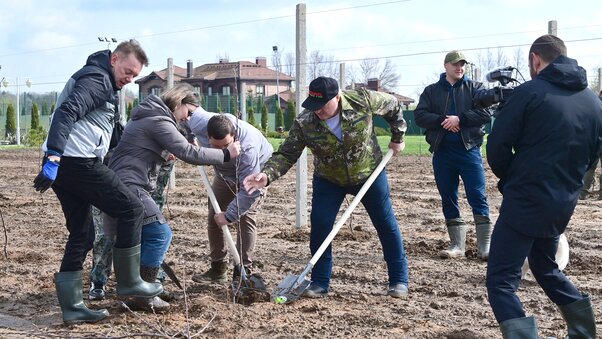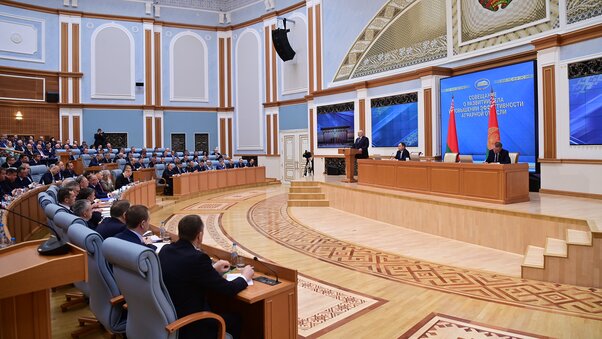Working trip to Kostyukovichi District, Mogilev Oblast
- 33
- 3
Belarusian President Aleksandr Lukashenko paid a working trip to Kostyukovichi District, Mogilev Oblast.
Upon arrival in Kostyukovichi, Aleksandr Lukashenko first asked about the progress in the implementation of the development program of the south-eastern part of the region. Mogilev Oblast Governor Anatoly Isachenko reported that the program had worked well in general.
The head of state instructed to schedule the corresponding meeting in the region in late July – early August.
The governor is expected to present a report at the meeting, which the President has instructed to schedule. “It is going to be a serious conversation,” the Belarusian leader said.
After that we will take a look at the eastern part of Gomel Oblast,” he added.
According to Aleksandr Lukashenko, the country is actively engaged in land reclamation efforts. The President called upon the farms to get involved in the work, adding the need to interest and compensate the costs. “Think how we can do it,” the head of state said.
He also drew attention to the need to bring order to farmlands. The President had earlier given instructions to deal with old idle buildings of former farms. These facilities, as Aleksandr Lukashenko emphasized, should not be “monuments of mismanagement”, while the released lands should be used for agricultural needs.
During the current trip, the President once again returned to the matter, instructing to pull down abandoned farms and other similar structures, and plow the lands. “The Emergencies Ministry and the military should be involved in the work,” Aleksandr Lukashenko said. “There is a lot of land mismanagement. We need to mobilize,” he said.
The Agriculture and Food Ministry, together with regional executive committees, has determined the structure of areas under crops for 2024. In accordance with it, farmers will need to plant or re-plant 2.4 million hectares, including 336,200 hectares in Mogilev Oblast. Farm machines are ready and maintained at the level of 95%. Work is underway to prepare forage harvesters for harvesting grass fodder."
“I don't know what you were proceeding from when deciding on increasing or decreasing the areas under crops. I also want to warn you against over-enthusiasm with corn... Scientists suggest that we plant legumes. Planting corn which makes sour silage for cattle is not a good thing. We need more hay. We need to plan everything very carefully for the next year so that we do not return to crop rotations, i.e. we need to pay serious attention to forage. Responsibility for this will be tough," Aleksandr Lukashenko warned.
As Agriculture and Food Minister Sergei Bartosh reported, planting of spring agricultural crops continues in Belarus. More than 1 million hectares have already been sown, or 45% of the plan and 105% of last year's level (43% of the target in Mogilev Oblast and 116% of last year's level). But in terms of some crops the field work is falling behind schedule.
“Precipitation is not a problem. Two or three days and the fields are dry, especially now. We need to sow crops promptly and efficiently. We need to work day and night. It is the right time to put the grain into the soil. The weather will be warm, moisture is leaving, that is why we need to sow crops in time,” the head of state demanded to increase the pace of fieldwork. “Harvester operators should be involved in the work to the full. Everything, including maize, should be planted before 9 May. That is why we need to work day and night.”
“I would only like to warn you to approach all the work wisely. Rapeseed and winter barley should be treated with care. These crops are very delicate and require certain weather conditions,” the President said.
The President also instructed to pay special attention to flax cultivation to provide the country’s processing plants with quality raw materials. “We need sufficient flax crops to secure ample supplies for our linen mills. We will gather in Orsha in autumn to review the work done,” the Belarusian leader said.
Aleksandr Lukashenko also got familiar with the samples of new and restored domestic farming machinery displayed in the field.


